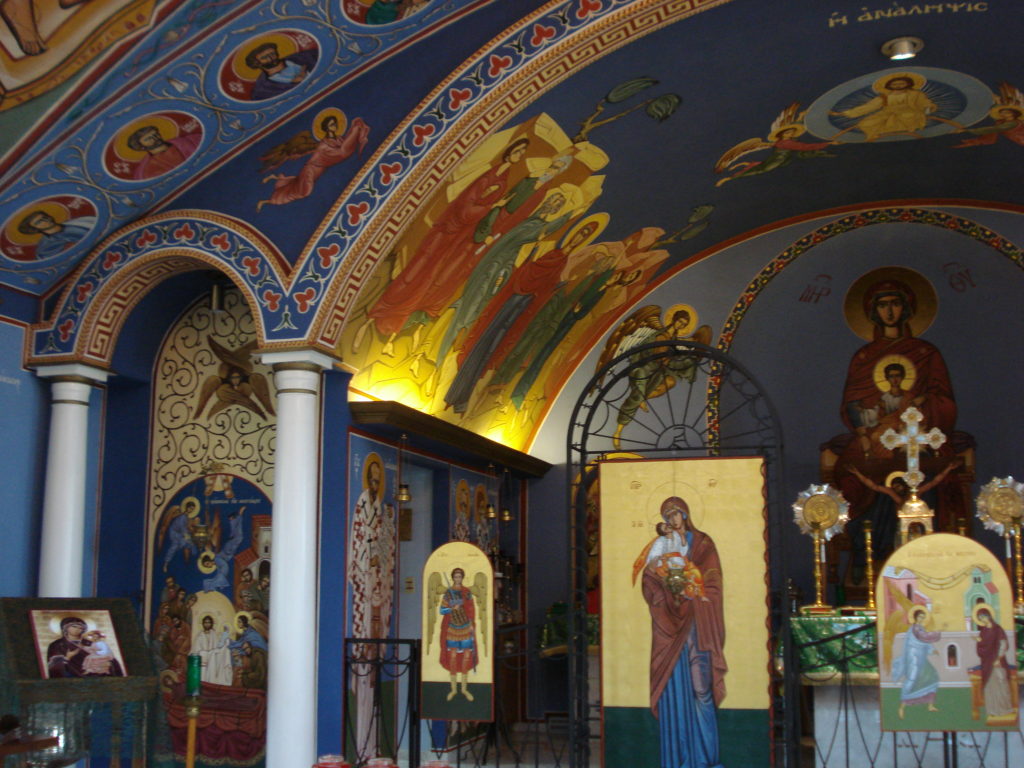- 608.244.1001
- agocwi.org
- Summer Worship 9:00 am; Winter Worship 10:00 am
Greek Orthodox Iconography
Iconographer David Giffey, a member of the Assumption community, began work on iconography at the church in 1979. The permanently installed murals and portable icons were executed in the traditional Eastern Christian style following the traditions of liturgical art dating back more than a thousand years. In a series of projects, the icons represent four years of full-time work and cover nearly 2,000 square feet of space on the ceilings and walls.

History of Iconography
Iconography (from Greek: εικoνογραφία) refers to the making and liturgical use of icons, pictorial representations of Biblical scenes from the life of Jesus Christ, historical events in the life of the Church, and portraits of the saints. Icons are usually two-dimensional images and may be made of paint, mosaic, embroidery, weaving, carving, engraving, or other methods. A person who practices the art of iconography is called an iconographer.
Images have always been a vital part of the Church, but their place was the subject of the Iconoclast Controversy in the 8th and 9th centuries, especially in the East. The Sunday of Orthodoxy, the first Sunday of the Great Fast (Lent) every year celebrates the reestablishment of the Orthodox veneration of icons. The use of iconography is considered one of the most distinctive elements of the Byzantine Rite.
Gallery of Church Iconography
Previous
Next
